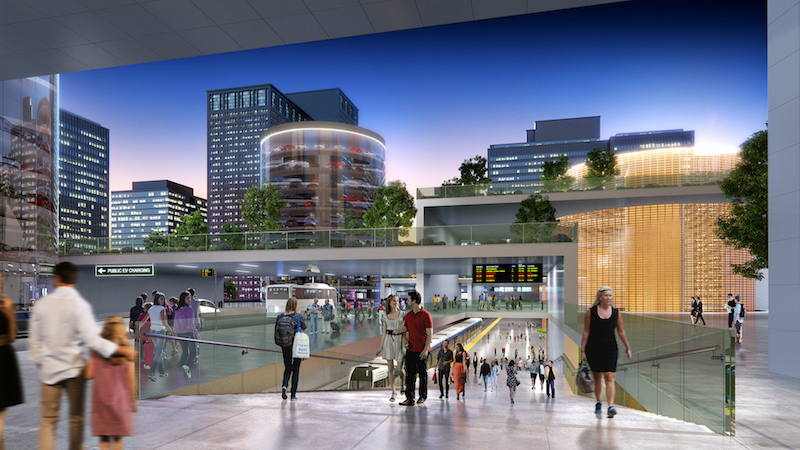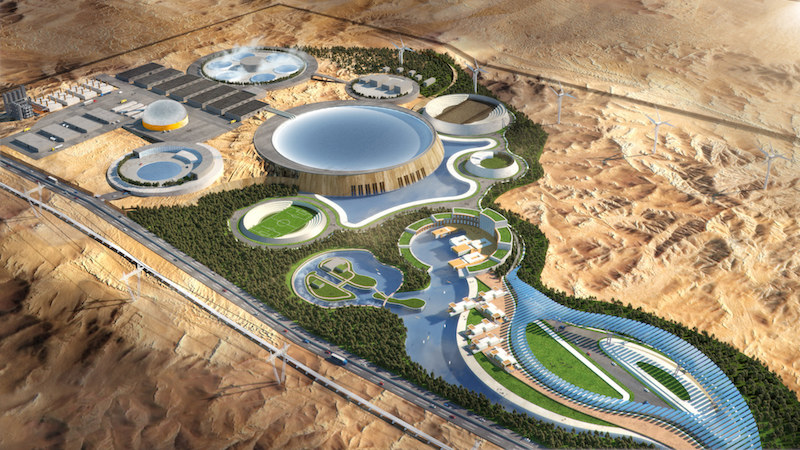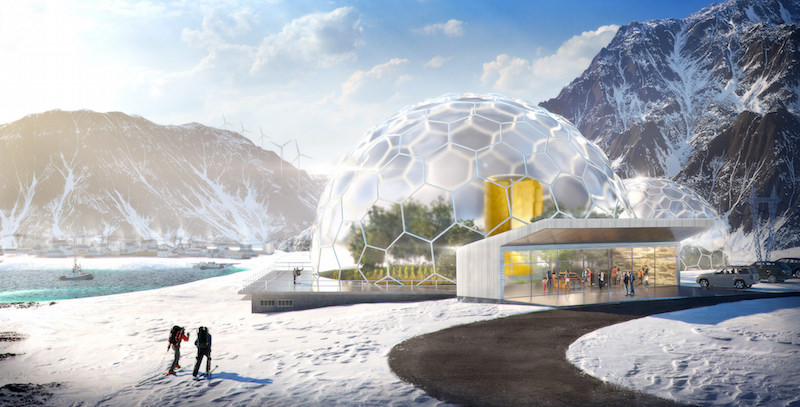More than 11% of the world’s electricity is produced by 447 commercial nuclear power reactors operating in 31 countries. The U.S. alone generates just under one-fifth of its electricity—19.7%—from 99 nuclear reactors operating in 30 states that produce 805.3 billion kilowatt-hours of power. At the end of last year, there were 61 nuclear plants under construction worldwide, the equivalent of 16% of existing capacity, and another 160 that have been firmly planned.
These statistics, from the World Nuclear Association and the Nuclear Energy Institute, would suggest that nuclear power—despite ongoing issues related to safety, security, regulations, and radioactive waste storage—is an ascending alternative to fossil fuels as a source of low-carbon power in a world that is increasing concerned about the impact of climate change.
In an opinion piece that Forbes published in early September, nuclear advocate and scientist James Conca noted that two nuclear power plants near Houston—which provide 2,700 MW of power to two million customers in the area—stayed fully operational during Hurricane Harvey, which caused oil refineries to shut down.
The next generation of nuclear plants will be smaller—the plants under construction range from 70 to 1,750 gross MWs—and resilient. But groups that promote nuclear as an essential ingredient of any cocktail of alternative energy sources “don’t have a large bank of imagery to draw upon” to show the public nuclear’s capabilities, says Suzanne Baker, a spokesperson for Third Way, a neoliberal think tank in Washington D.C.
Earlier this year, Third Way commissioned Gensler to come up with sketches and renderings that can be used to explain the role that advanced reactors could play in a variety of energy systems that enable the world to reach its goals for reducing CO2 emissions. Those renderings were exhibited at D.C.’s Fathom Gallery on Oct. 28. The images can be downloaded from Third Way’s website.

The rendering of a transit hub, where a nuclear reactor provides zero-emissions power for rail and electric vehicles. Image: Third Way
Gensler worked up images for six “scenarios” where nuclear could provide low-carbon power. These include
•A remote arctic community, off the power grid, where electricity is extremely pricey;
•A clean transit hub, where a small reactor powers rail lines, personal electric vehicles, shared autonomous vehicles, and electric buses;
•Growing communities in the developing world where large-scale reactors provide power, and whose excess capacity is used for an onsite desalination plant to provide clean water;
•A high-temperature reactor to power and heat for local industries;
•A Naval base, where advanced reactors generate around the clock electricity and power ships docked at port; and
•Powering data centers, upon which many of life’s daily functions are increasingly dependent.
While much of the growth in nuclear energy technology is occurring overseas, specifically in Russia, China, and the United Arab Emirates, Third Way believes the renderings can help spur innovation in the U.S.—which in recent years has all but ceased building nuclear plants in favor of other forms of alternative energies—“and help American nuclear companies and technologies become more competitive in international energy markets,” says Baker.
She acknowledges that Gensler’s portfolio does not include a broad range of nuclear power plant designs. But, she explains, “We wanted a fresh eye on the topic.” Baker adds that Gensler’s designs typically emphasize sustainability, so the commission “was an alignment of values.”
Earlier this year Baker “cold called” Gensler’s D.C. office about its interest in this project. “Our receptionist went over the public address system and said 'would someone from the Green Team dial zero?,' ” recalls Liz Resenic, LEED AP BD+C, WELL AP, a sustainability specialist at Gensler.
The firm doesn’t have a “green team,” per se; Resenic, on its sustainability team, took the called and spoke with Baker for about 15 minutes about visualization.
At that point, Gensler’s most notable experience in the nuclear power arena was its master planning and urban design for its K.A. CARE project, which stands for the King Abdullah City for Atomic and Renewable Energy in Riyadh, Saudi Arabia.
The firm agreed to accept Third Way’s commission “because we’re interested in being part of this conversation,” says Duncan Lyons, RIBA, LEED AP BD+C, a Senior Associate and Office Building Developers Practice Area Leader, who was the lead designer on this project. (Other Gensler associates who worked on the renderings and sketches include Gregory Plavcan, Matthew Boland, and Katie Costa.)

A desert compound whose advanced nuclear reactor pumps out 1,000-plus MW of capacity that supplies a nearby growing city. Image: Third Way
The project operated under a tight schedule: Visualizing sessions were conducted in August, for which Gensler pulled images from the nuclear industry as well as related examples of energy produced by hydro, solar and wind, says Lyons.
Gensler started producing the renderings and sketches in September, and completed them last month.
Baker says Third Way is targeting three audiences with its renderings: policy makers, the press, and the nuclear sector itself, which could use the illustrations in debates about the efficacy of nuclear power.
Related Stories
Energy Efficiency | Dec 6, 2022
Washington state’s Building Code Council mandates heat pumps in all new residential construction
The Washington State Building Code Council has voted to require heat pumps for all new residential construction starting in July 2023. The new mandate has drawn criticism over concerns that it will add costs to housing construction, especially given current supply chain challenges for heat pumps.
Geothermal Technology | Dec 6, 2022
Google spinoff uses pay-as-you-go business model to spur growth in geothermal systems
Dandelion Energy is turning to a pay-as-you-go plan similar to rooftop solar panel leasing to help property owners afford geothermal heat pump systems.
Legislation | Nov 23, 2022
7 ways the Inflation Reduction Act will impact the building sector
HOK’s Anica Landreneau and Stephanie Miller and Smart Surfaces Coalition’s Greg Kats reveal multiple ways the IRA will benefit the built environment.
Energy-Efficient Design | Nov 14, 2022
How to achieve net zero energy in five steps
Martine Dion and Ethan Seaman share net zero energy best practices with owners and developers.
Green | Nov 13, 2022
Global building emissions reached record levels in 2021
Carbon-dioxide emissions from building construction and operations hit an all-time high in 2021, according to the most recent data compiled by the Global Alliance for Buildings and Construction.
Industry Research | Nov 8, 2022
U.S. metros take the lead in decarbonizing their built environments
A new JLL report evaluates the goals and actions of 18 cities.
Wood | Nov 1, 2022
A European manufacturer says its engineered wood products can store carbon for decades
Metsä Wood, a Finland-based manufacturer of engineered wood products, says its sustainable, material-efficient products can store carbon for decades, helping to combat climate change.
Energy Efficient Roofing | Oct 28, 2022
Rooftop mini turbines can pair with solar panels
A new type of wind turbine can pair well on roofs with solar panels, offering a double source of green energy generation for buildings.
Energy-Efficient Design | Oct 24, 2022
Roadmap shows how federal buildings can reach zero embodied carbon emissions by 2050
The Rocky Mountain Institute (RMI) has released a roadmap that it says charts a path for federal buildings projects to achieve zero embodied carbon emissions by 2050.
Energy-Efficient Design | Oct 14, 2022
A DOE software suite is helping SmithGroup optimize its designs’ energy efficiency
AutoBEM can run more than 200,000 energy models in an hour.

















